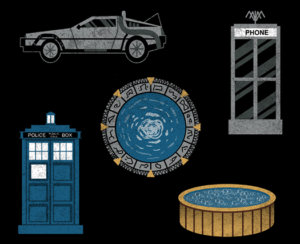Hin dsight is 20/20 or so the saying goes so. Applying that logic, I look at my improvement initiatives in the same way. I begin with the end in mind and look at using the metrics to see things in reverse. Understanding where I want to be will allow me to use today’s baseline to build a road-map for success.
dsight is 20/20 or so the saying goes so. Applying that logic, I look at my improvement initiatives in the same way. I begin with the end in mind and look at using the metrics to see things in reverse. Understanding where I want to be will allow me to use today’s baseline to build a road-map for success.
One of the first things I tell anyone when we are looking to make any type of improvement is to ensure that they have all the makings of SMART goals. They should be specific, measurable, achievable, realistic, and time-based. Now that you have the outline, you can get to the root of what you are looking to accomplish for improving service delivery.
From a road-map perspective, think about what your end state should look like and then start to work “backwards.” What is the biggest pain point for your team.
Let’s look at an example:
At AnyCorp, one of their issues is the rate at which service requests were being handled. On average they were able to resolve requests within 43 business hours. The expectation, while currently not formalized, was that these would be resolved within 24 business hours.
Strictly look at this on its own merit. Review the “average duration of request.”
For some, this seems like an overly simple place to look. People tend to immediately look for other things. This is where people over complicate and can’t make proper assessments.
Without looking through a sea of metrics we can spend more time focusing on what was going on from a resolution perspective. When she looked at the resolution rates on their own we saw that the overall resolution rates were 43 hours as mentioned earlier. If we now dig down a layer and looked at the resolution based by priority, something obvious jumped out right away.
We can see that the teams were handling the top-priority requests quickly, well under the 24-hour business expectation. This was the first win, so not all is doom and gloom. Don’t forget to ensure that teams know what they are doing right—celebrate this success!
Now that we have identified what AnyCorp is doing well, we could identify where the longer duration issues existed. We can see that the lower priority requests were taking more time but could be looked at would be if there was an assignment group that was having some challenges.
Look to identify what is causing constraints on achieving the outcome itself. It could be the number of requests, or that there is a lack of specialized resources. Whatever constraints exist you will need to prioritize them to address them. Once one constraint is eliminated you will see improvements through your metrics but remember another constraint will likely surface so you AnyCorp will need to continue to review and improve towards it goal.
Part of the roadmap exercise will require that you have time checks throughout. This will ensure that you are on target to reaching the goal. In the previous example we were looking to improve service delivery. With that in mind we might want to have quarterly targets that we can report on and communicate with teams so that they can see where we are.
While you might not get to the goal right away, communicating with your stakeholders on the progress will allow you to share in the team’s success in not only improving the service delivery, but likely in streamlining the way you are providing service.
Looking for guidance in your ITSM Journey?
Contact Blackfriar Consulting today
